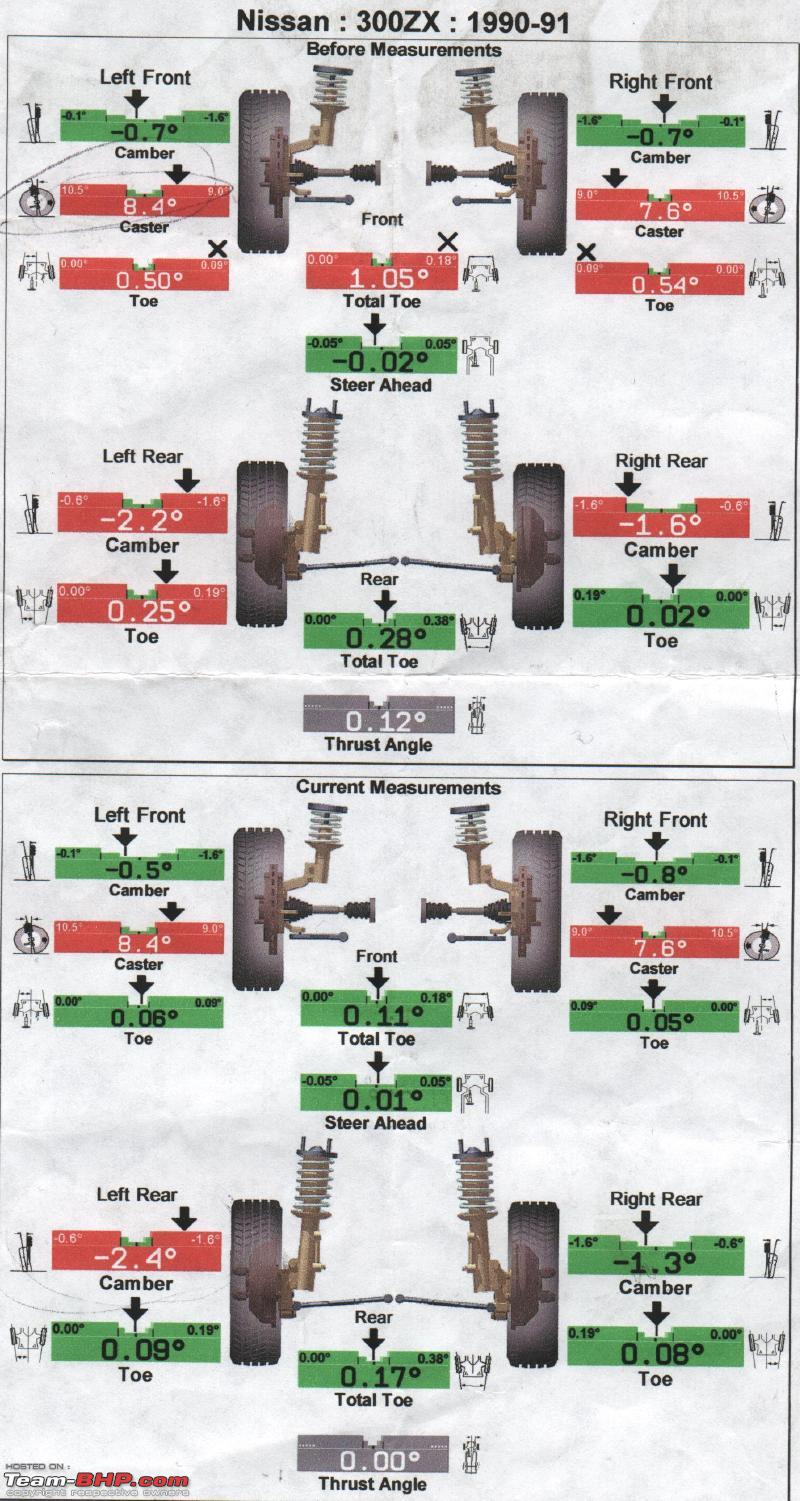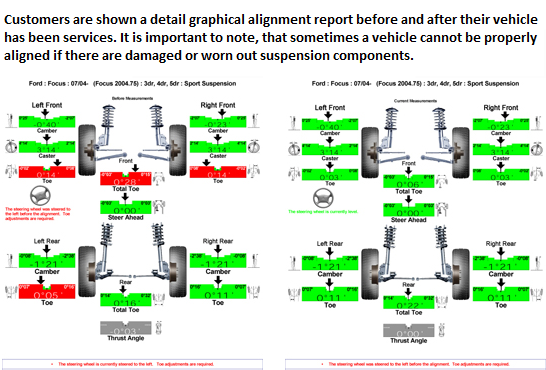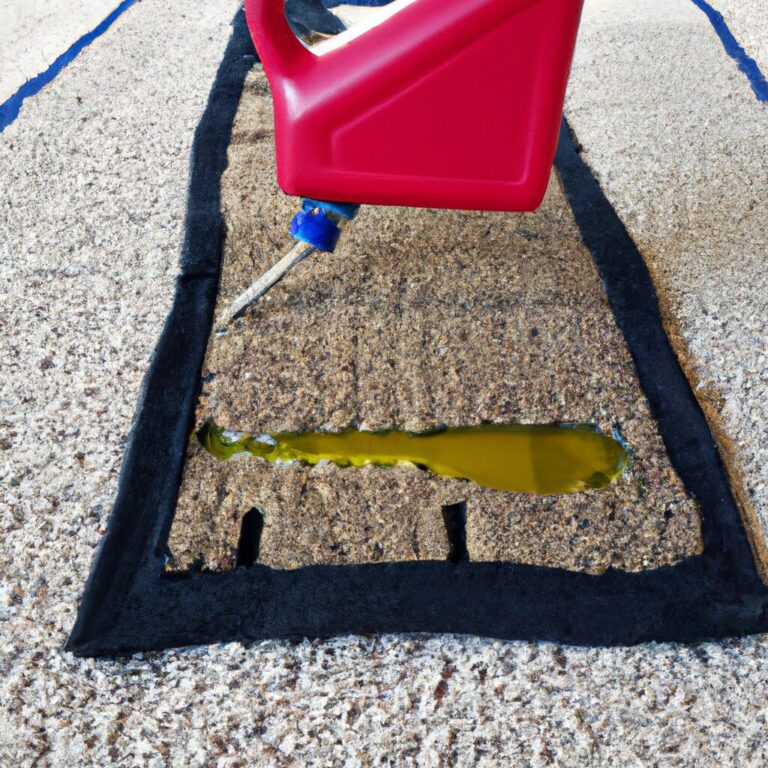How to Read a Wheel Alignment Report
To read a wheel alignment report, focus on values for camber, toe, and caster angles. Compare these to recommended specifications.
Understanding how to interpret a wheel alignment report is essential for vehicle maintenance and optimal performance. The report provides data on the angles of the wheels in relation to each other and the road surface. By analyzing values for camber, toe, and caster, you can determine if adjustments are needed to ensure proper alignment.
This information helps prevent uneven tire wear, improves handling, and enhances overall safety on the road. By regularly reviewing and acting upon wheel alignment reports, you can extend the lifespan of your tires and maintain your vehicle’s efficiency.
Credit: www.quora.com
Importance Of Wheel Alignment
Wheel alignment is a crucial aspect of vehicle maintenance that often gets overlooked. Understanding the significance of a proper wheel alignment can help you maintain your vehicle and ensure a smooth driving experience. In this blog post, we will discuss the importance of wheel alignment and the benefits of proper alignment. But first, let’s start by exploring why wheel alignment is essential.
Why Wheel Alignment Is Important
Wheel alignment is important because it ensures that the angles of the wheels are set to the manufacturer’s specifications. When your wheels are aligned correctly, it helps in maintaining the stability and control of your vehicle. Proper alignment also reduces tire wear, improves fuel efficiency, and enhances the overall driving experience.
Benefits Of Proper Wheel Alignment
Proper wheel alignment offers various benefits that contribute to the overall performance and longevity of your vehicle. Some of the key advantages include:
- Extended Tire Life: Proper alignment prevents uneven tire wear, extending the lifespan of your tires.
- Improved Fuel Efficiency: When your wheels are properly aligned, it reduces rolling resistance, resulting in better fuel economy.
- Enhanced Handling: A well-aligned vehicle ensures better handling and a smoother driving experience.
- Safer Driving: Correct alignment contributes to better stability and control, leading to safer driving conditions.

Credit: www.team-bhp.com
Understanding A Wheel Alignment Report
Understanding a Wheel Alignment Report is crucial for ensuring your vehicle’s alignment is optimal. By decoding the information provided in the report, you can identify any potential issues and address them promptly.
Components Of A Wheel Alignment Report
A Wheel Alignment Report typically includes measurements related to three main components: camber, toe, and caster. Camber refers to the inward or outward angle of the tire when viewed from the front of the vehicle. Toe indicates whether the tires point inward or outward when viewed from above. Caster measures the angle of the steering axis when viewed from the side.
Interpreting The Measurements
When reviewing a Wheel Alignment Report, it is essential to pay attention to the specified range for each measurement. Values outside the recommended range can indicate misalignment, which may lead to uneven tire wear and handling issues. Ensure that the camber, toe, and caster measurements fall within the acceptable parameters to maintain optimal vehicle performance.
Common Terms And Measurements
Understanding the common terms and measurements in a wheel alignment report is crucial for interpreting the vehicle’s alignment status accurately. Let’s delve into key terms like camber, toe, caster, and thrust angle to gain insights into your alignment data.
Camber
Camber refers to the angle of the wheel when viewed from the front. Proper camber alignment ensures even tire wear and stability.
Toe
Toe measures the angle of the tires when viewed from above. It affects steering and tire wear. Adjusting toe alignment is crucial for optimal vehicle handling.
Caster
Caster indicates the forward or backward tilt of the steering axis. Proper caster alignment contributes to steering stability and return-to-center capability.
Thrust Angle
Thrust angle measures the alignment of the rear wheels concerning the vehicle’s centerline. Correcting thrust angle is essential for maintaining straight-line stability.
In a wheel alignment report, paying attention to these terms and measurements can help identify issues and ensure proper vehicle performance on the road.

Credit: kwikkarwillowbend.com
Identifying Alignment Issues
Signs Of Misalignment
A misaligned wheel can lead to several visible signs that indicate a vehicle’s need for a wheel alignment check. Such signs can include uneven tire wear, steering wheel vibration, vehicle pulling to one side, and a crooked steering wheel when driving straight. These signs can help you identify potential alignment issues that need to be addressed promptly.
Factors That Can Affect Wheel Alignment
Several factors can have an impact on a vehicle’s wheel alignment, including potholes, curb impacts, worn suspension components, and regular wear and tear. It’s important to be mindful of these factors as they can lead to misalignment and affect the overall handling and safety of the vehicle. By understanding these influencing factors, you can take proactive measures to maintain proper wheel alignment.
Taking Action
Learn how to interpret a wheel alignment report effectively and take action to improve your vehicle’s performance. Understand the key measurements and adjustments mentioned in the report, giving you the confidence to make the necessary changes for optimal wheel alignment.
Now that you have a thorough understanding of how to read a wheel alignment report, it’s time to take action. Armed with the knowledge gained from the report, you can make the necessary adjustments to ensure your vehicle’s wheels are aligned correctly for optimal performance and safety. Taking action is essential to prevent further damage to your tires, suspension, and overall vehicle performance.
Getting A Wheel Alignment
Before taking any action, it’s important to schedule a wheel alignment with a qualified mechanic or an auto shop. A wheel alignment involves adjusting the angles of the wheels to meet the specifications set by the manufacturer. This process ensures that the wheels are parallel to each other and perpendicular to the ground.
During a wheel alignment, the technician will use specialized tools and equipment to measure various angles, including the camber, caster, and toe. Based on the readings, they will then make the necessary adjustments to bring your wheels back into proper alignment.
Maintaining Proper Alignment
Once you have had a wheel alignment done, it’s essential to maintain proper alignment to prolong the life of your tires and ensure optimal vehicle performance. Here are some tips to help you maintain proper alignment:
- Regularly inspect your tires for signs of uneven wear, such as cupping, feathering, or uneven tread wear. If you notice any of these signs, it may indicate an alignment issue.
- Check your vehicle’s suspension components regularly. Worn or damaged suspension parts can affect wheel alignment.
- Avoid hitting curbs or potholes as they can throw your wheels out of alignment.
- Have your alignment checked at least once a year or every 10,000 miles, or whenever you notice any handling issues.
By following these tips and being proactive about maintaining proper alignment, you can ensure your vehicle performs optimally and prolong the life of your tires.
In Conclusion
Understanding how to read a wheel alignment report is crucial for taking action to correct any issues. By getting a wheel alignment and maintaining proper alignment, you can avoid unnecessary tire wear and improve your vehicle’s handling and safety. Remember, taking action promptly is key to prevent further damage and costly repairs down the road.
Frequently Asked Questions For How To Read A Wheel Alignment Report
What Do The Numbers Mean On An Alignment Report?
The numbers on an alignment report indicate the angles of the wheels. These numbers show the position of the wheels in relation to each other and the road. They include camber, toe, and caster angles, which affect tire wear and vehicle handling.
How Do You Read A Wheel Alignment Print Out?
To read a wheel alignment print out, check measurements for camber, caster, and toe angles. Look for green within specified ranges.
What Should A Wheel Alignment Report Look Like?
A wheel alignment report should include measurements for camber, caster, toe, and thrust angle. It should show before and after values, highlighting any adjustments made during the alignment process. The report should be clear and easy to understand for the customer.
What Is The Acceptable Range For Wheel Alignment?
The acceptable range for wheel alignment is typically within ±0. 02 degrees for all four wheels. It’s essential for proper vehicle handling and tire wear. Regular alignment checks are important for a safe and smooth driving experience.
What Is A Wheel Alignment Report?
A wheel alignment report is a document that shows the measurements and adjustments made during a wheel alignment.
Why Is A Wheel Alignment Report Important?
A wheel alignment report is important because it provides valuable information about the current condition of your vehicle’s wheels, helping you understand if any adjustments are needed.
How Can I Interpret A Wheel Alignment Report?
To interpret a wheel alignment report, look for measurements such as camber, caster, and toe, and compare them to the recommended specifications provided by the vehicle manufacturer.
Conclusion
Understanding your wheel alignment report is essential for maintaining your vehicle’s performance and safety. By interpreting the measurements and recommended adjustments, you can ensure that your tires wear evenly and your vehicle drives straight. Keep track of your alignment over time to prevent uneven tire wear, improve fuel efficiency, and enhance your overall driving experience.

